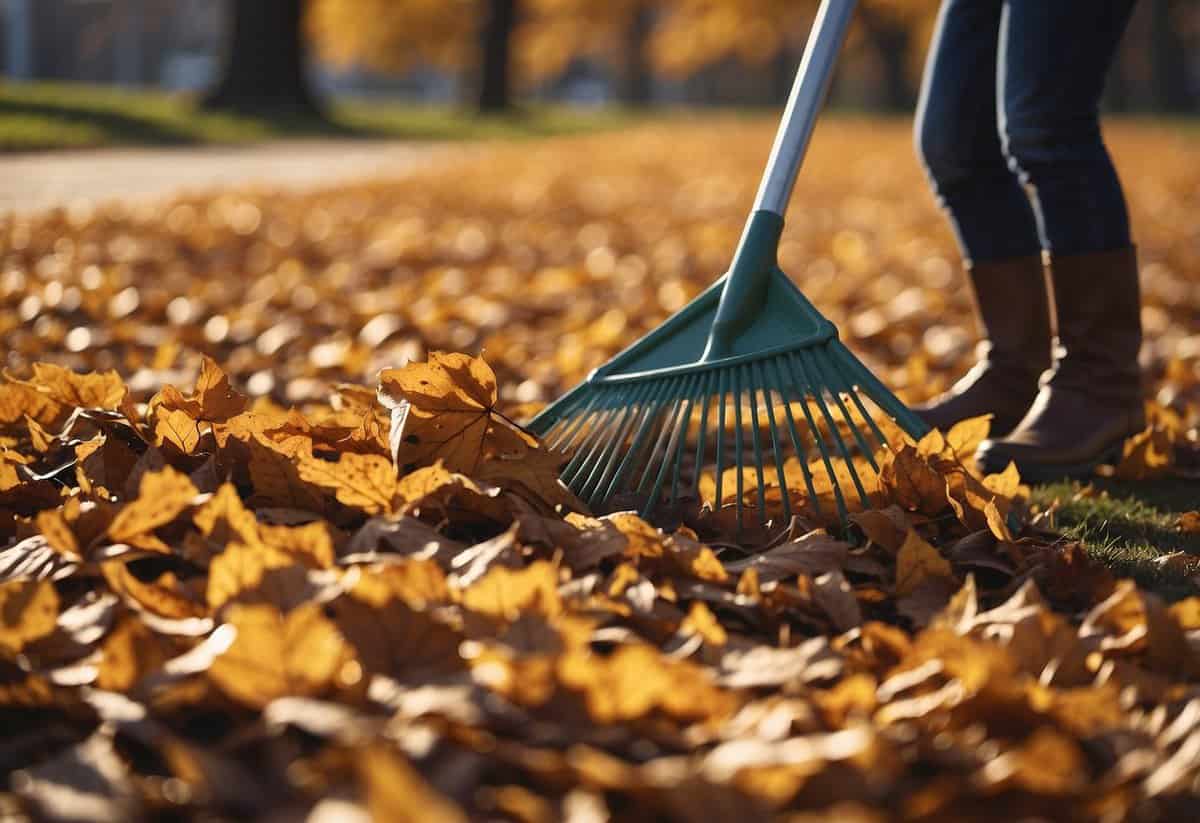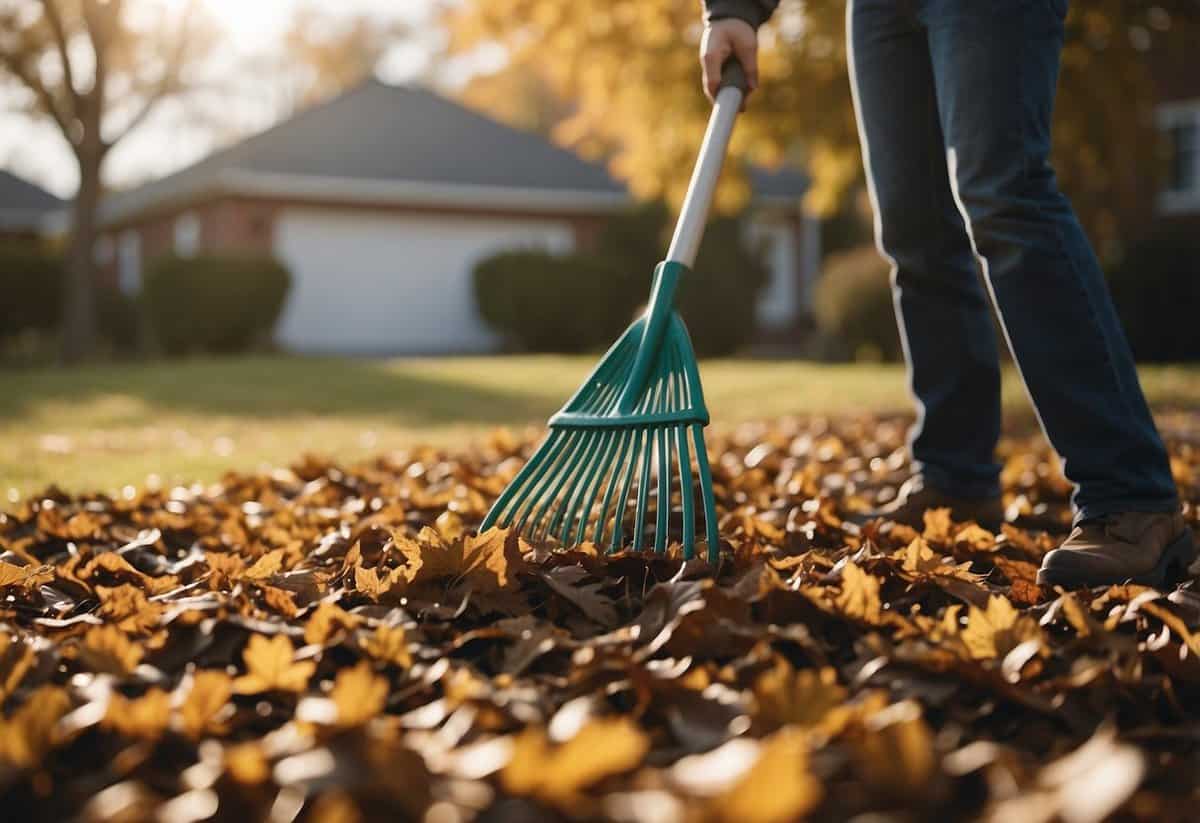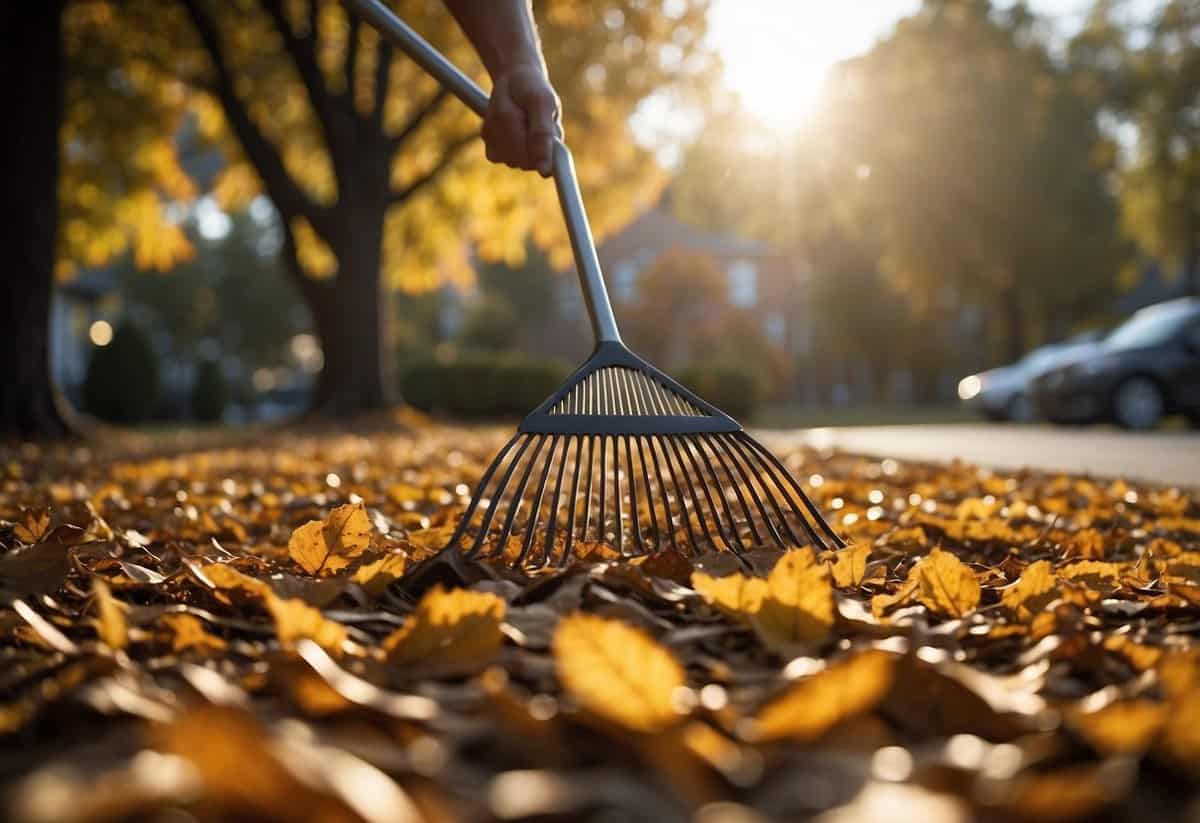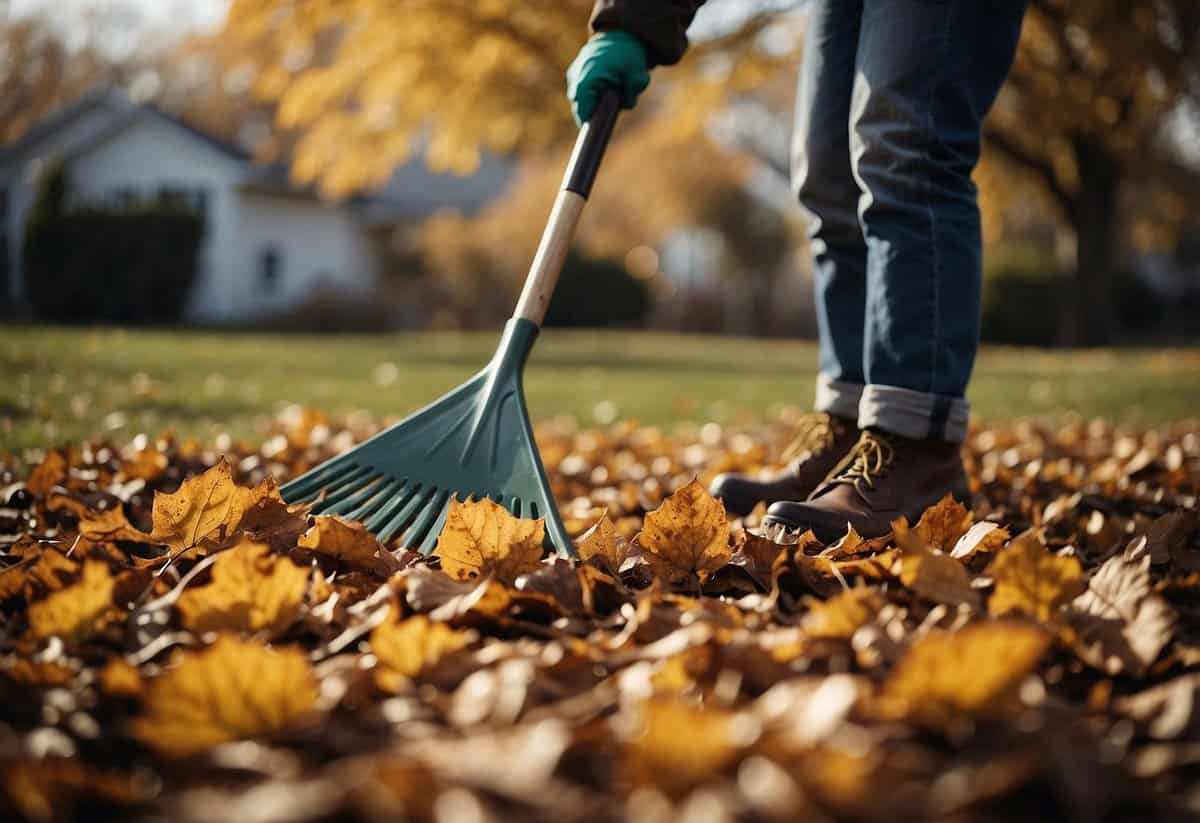Does Raking Leaves Count as Exercise? Discover the Benefits
Looking for an easy way to get your daily exercise? Consider raking leaves! It might surprise you, but raking leaves can be a great physical activity. This common chore engages your muscles and can burn a significant number of calories.

Depending on your weight and fitness level, you can burn anywhere from 250 to 400 calories in just one hour of raking. This makes it a more intense workout than some traditional exercises like walking at a brisk pace.
Moreover, the repetitive motion of raking strengthens your arms, back, and core while improving your overall endurance. Next time you’re faced with a yard full of leaves, think of it as an opportunity to boost your fitness rather than a tedious task.
The Basics of Raking as Exercise

Raking leaves offers both physical and health benefits. It involves moderate-intensity cardiovascular activity, meeting the criteria set by the Physical Activity Guidelines for Americans. Let’s explore how this yard work helps you stay fit.
Defining Moderate-Intensity Exercise
Moderate-intensity exercise is any activity that raises your heart rate and makes you break a sweat but still allows you to hold a conversation.
Raking leaves fits this category well. When you rake, your heart rate goes up, and your breathing becomes faster.
According to the American Council on Exercise, you can burn between 250 to 400 calories per hour of raking, depending on your weight and fitness level.
Here’s a simple table to illustrate calorie burn during raking for different weights:
| Weight (lbs) | Calories Burned per Hour |
|---|---|
| 100 | 181 |
| 125 | 226 |
| 150 | 272 |
This shows how yard work, specifically raking, can help you reach your fitness goals.
Understanding Yard Work and Fitness
Yard work provides a full-body workout, engaging major muscle groups in your back, shoulders, arms, and legs.
When you rake leaves, you also perform movements similar to those in strength training and aerobic exercises. This dual benefit improves your cardiovascular health and enhances muscle strength.
Raking leaves is also an excellent moderate-intensity cardiovascular activity. The Physical Activity Guidelines for Americans recommend about 150 minutes of moderate-intensity exercise weekly, and yard work like raking can help you achieve this target.
Engaging in these activities frequently can improve your flexibility and coordination. Plus, spending time outdoors is an added perk that boosts your overall well-being.
Physical Benefits of Raking Leaves

Raking leaves provides a great workout for various parts of your body. It engages your core, back, arms, shoulders, and legs, helping you burn calories and improve overall fitness.
Core and Back Conditioning
Raking leaves requires twisting and turning, which engages your core muscles. When you rake, you use your abdominal and back muscles to stabilize your body and maintain balance. This helps in building a stronger core. Keeping your back straight while raking can prevent injuries and improve posture. According to Cawley Physical Therapy, just one hour of leaf raking can burn between 250 to 400 calories, depending on your weight and fitness level. This makes it a good cardiovascular workout as well. Regular raking can help in toning your core and back, making these muscles more resilient.
Arm and Shoulder Strengthening
Raking is also great for your arms and shoulders. The repetitive motion required for raking strengthens the muscles in your upper body, particularly your biceps, triceps, and shoulders. As you move the rake back and forth, these muscles contract and relax, increasing their strength and endurance. Alternating hands during raking can help in balancing muscle development on both sides of your body. Short strokes and proper form, such as raking to the side and avoiding twisting, can maximize the benefits and minimize the risk of muscle strain, as suggested by Mobilize Physical Therapy.
Legs and Lower Body Engagement
Engaging your legs and lower body is crucial when raking leaves. Your legs help in maintaining balance and supporting your body weight. Bending at your knees rather than your back can prevent injury and engage your leg muscles effectively. This also helps in working out your calf, thigh, and glute muscles. Raking leaves can act as a functional fitness exercise, improving your overall body coordination and lower body strength. Making sure to use the correct form and alternating your stance can distribute the workload evenly across your lower body muscles. Different movements involved in raking contribute to a comprehensive workout for your legs and lower body.
Best Practices for Raking as a Workout

To make raking leaves an effective workout, focus on proper technique and incorporate stretching and breaks to avoid injury and improve fitness.
Proper Raking Techniques
Using proper raking techniques helps you get the most out of your workout and prevent aches. First, always stand with your feet shoulder-width apart and bend your knees slightly to maintain good posture. This stance helps to protect your back.
Switch hand positions regularly to work different muscle groups and avoid overuse injuries. Hold the rake handle with one hand near the top and the other hand about halfway down. Change your grip often.
Use smooth, controlled motions when raking. Rake leaves toward you rather than side to side. This method engages your arms, shoulders, and core. Keep the rake close to your body to maximize efficiency and reduce strain.
Incorporating Stretching and Breaks
Start with a warm-up to prepare your muscles for physical activity. Take a few minutes to walk around your yard or do some gentle stretching. Focus on stretches for your back, shoulders, and legs. This helps increase blood flow and reduce the risk of injury.
Take breaks every 15-20 minutes. During breaks, hydrate and perform gentle stretches to keep your muscles loose. Pay attention to how your body feels and adjust your activity level based on your fitness level.
These short rests also give you a chance to evaluate your form and make any necessary adjustments. Incorporating brief stretches and water breaks ensures a more enjoyable and effective raking workout.
Enhancing Your Raking Routine

To make raking leaves a more effective workout, try increasing the intensity and variation of your actions. Additionally, using the right tools and equipment can help you maximize the benefits and stay safe.
Increasing Intensity and Variation
Boosting the intensity of your raking routine can help you burn more calories. Aim to rake at a brisk pace, similar to a good jog. Switching sides frequently while raking ensures that you work out both sides of your body evenly.
Adding squats as you pick up leaves can further engage your muscles. Instead of bending over, squat down each time you need to grab a pile of leaves. This can help tone your legs and core.
Try incorporating other movements like lunges or stepping in place. These variations keep your body engaged and can prevent you from getting bored. You might also want to experiment with different raking patterns, like raking in circles instead of straight lines.
Utilizing Tools and Equipment
Using the right tools can make your raking routine more efficient and comfortable. A sturdy rake is essential, but you can also consider tools like a leaf blower to vary your activities.
Wear gloves to protect your hands and good shoes to support your feet. Gloves will prevent blisters, while well-cushioned shoes can reduce the impact on your joints. Using a lightweight, ergonomic rake can reduce strain on your back and arms.
A leaf blower can add an element of resistance training. Switching between raking and blowing leaves can vary the muscle groups you engage. This not only makes the task less monotonous but also helps you achieve a more balanced workout.
Safety Tips and Injury Prevention

Raking leaves can be good exercise, but it’s important to stay safe while working in your yard. Learn about common strains to watch out for and measures you should take to avoid injuries.
Awareness of Common Strains
One of the most common issues while raking is back pain. Using incorrect posture or overexertion can strain your back muscles. Hold the rake close to your body and keep one hand near the top for better leverage. Stand with your legs slightly bent and your weight evenly distributed.
Your neck and shoulders can also be affected. Avoid reaching too far and switch sides frequently to prevent overusing one side. If you feel any pain, take a break immediately to avoid worsening the strain.
Fatigue can set in if you do too much at once. Take small breaks regularly to stay fresh and energized. This helps to prevent injuries caused by tired muscles.
Protective Measures During Yard Work
Warming up before starting can help prevent injuries. Stretch your legs, arms, and back to get your muscles ready. This reduces the risk of strains.
Good posture is key. Engage your core and keep your chest upright. Using a scissor stance, where your feet are staggered, provides greater stability and reduces strain on your knees and back.
Using proper safety gear is essential. Wear gloves to protect your hands and closed-toe shoes to shield your feet. Protect yourself from the sun by wearing sunscreen and a hat. Stay hydrated by drinking water regularly.
Tools can make a big difference. Use long-handled rakes to avoid bending too much. Consider leaf blowers or other equipment to reduce physical strain.
These tips can keep you safe and injury-free as you enjoy the fresh air and the light exercise that yard work provides. For more detailed advice, visit UPMC HealthBeat.







